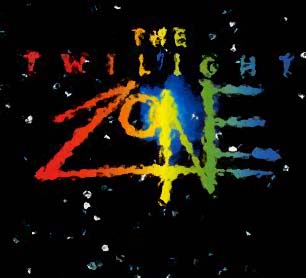 |
||||||||||||||||||||||||
|---|---|---|---|---|---|---|---|---|---|---|---|---|---|---|---|---|---|---|---|---|---|---|---|---|
| Story by J. Michael Stracznski | ||||||||||||||||||||||||
| Teleplay by Gus Trikonis | ||||||||||||||||||||||||
| Original Airdate - October 4, 1986 | ||||||||||||||||||||||||
|
||||||||||||||||||||||||
| Story: | ||||||||||||||||||||||||
|
||||||||||||||||||||||||
"What Are Friends For" is a curious segment, and possibly a telling one. It's based on a story by J. Michael Stracynski, who CBS used to churn out the third season of the new Twilight Zone after they cancelled it, and adapted for the show by Gus Trikonis; it was apparently directed by Trikonis as well. It has just enough wit to make it interesting and it also uses that wonderful child actor Lukas Haas, who can electrify any production. I think this segment convinced someone at CBS that Stracynski would be a good choice to crank out the remaining number of episodes that the NTZ needed for them to be able to sell it into syndication. However, any scene Haas isn't in makes the episode rough going, and exposes all the flaws in the story. In the end it's a weak entry for the series because if you've seen it once, it takes forever to get through the second time…kind of like anything else Stracynski has written. The IMDB has a snippet about Stracynski calling Harlan Ellison and asking for advice, because he kept getting rejection slips on his writing. Ellison reportedly said, "The reason your stories are being rejected is because you're writing crap! Stop writing crap!" My opinion is that Stracynski never stopped writing crap, and that his situation vis a' vis the new Twilight Zone resembles work being outsourced to a cheaper sweatshop. He embodies the ethos of the networks…spend less money to make a profit, no matter the crap you put on the screen. Tom Skerritt has little to do in this, though he's the main lead. His performance is laid-back to the point of unconsciousness, though he does manage a spark of wonder when Mike tries to create a grown-up playtoy for him, i.e., the gorgeous model on the sportcar. He is nowhere near as animated as he needs to be; either he wasn't feeling well that day, or the director didn't do any directing. Fred Savage is mostly just adequate as Jeff and we all know that Savage could be a winning child actor, so the direction could very well be the cause of his so-so performance. Lukas Haas as Mike is the only member of the cast that seems alive and reacting, which is ironic since he's supposed to be some kind of ghost or woodland spirit. It seems like Haas was so natural as an actor that he didn't need much direction. The only reason to watch this episode is to see his performance, and, for the special effect at the end. Mike resumes his natural shape, which looks suspiciously like a ghost and not a woodland spirit, but is excellently done. The only part of this special effect that is wrong is when they tried to paint a face on the ghostly form. Once again, I can veer off into classic television to paint a picture of how something like this has been done effectively. M. R. James was the master of the Victorian ghost story. His short story, "Oh, Whistle, and I'll Come To You, My Lad," is a chilling and evocative piece of literature that takes place near Suffolk, on the coast of England. It was adapted by the BBC for their "Ghost Stories at Christmas" series, back in the 60's, and starred Michael Hordern as the man that digs up an extremely strange whistle. When he blows the whistle nothing happens, visibly, but it summons something no one would want to be friends with. This episode was released on DVD; I ordered it from England six or seven years ago and it is one of the seminal adaptations of a ghost story…if you haven't seen it, find it in any way that you can and watch it. This is classic ghost telling at its best. Also, if you're buying that, get "A Warning for the Curious," another ghost story for Christmas…it is as scary as "Whistle." The English are masters of understated terror on-screen. The ghost in M. R. James' story is largely invisible, yet it takes on the odd shape at times. When it apparently follows Hordern back to his hotel room after he blows the whistle, he wakes up to find the ghost occupying the other empty bed in his room though he initially thinks it's his friend who was supposed to join him. The ghost, or spirit, rears up using the top sheet, as if the sheet itself has been possessed. No one tried to paint a face on this crumpled linen nightmare, and this point holds the key to the success of the teleplay. Our imaginations give it a face, a shifting, horrendous, terrifying, blank face, depending on any given second you look at it. It is far too scary of a picture for most people and even I, who make ghost stories a priority and thought not much could scare me anymore, looked through my fingers at it. The failure of "What Are Friends For?" is that it does put a face on the spirit, and tries to hammer what it thinks should be obvious into our brain. Add to that the whishy-washy story, and you have one of the least successful segments and a harbinger of what is to come in the third season. |
||||||||||||||||||||||||
|
||||||||||||||||||||||||


